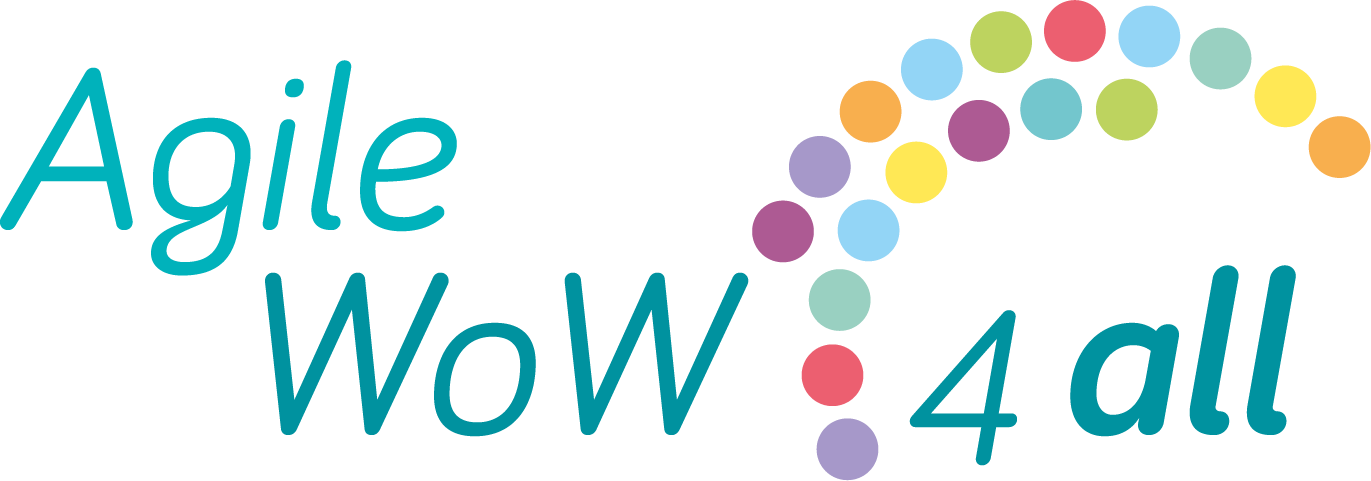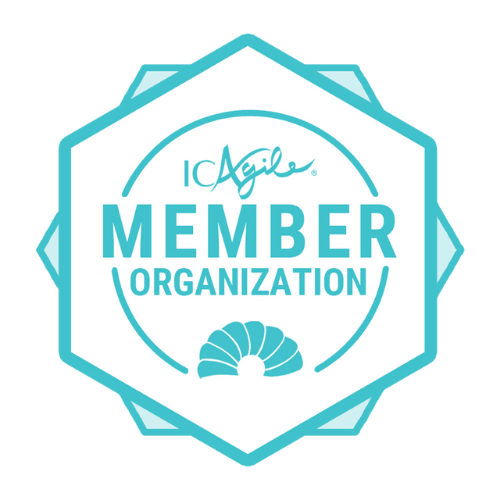Nov 7
/
Christophe Martinot
Navigating the Storm: The Symbiotic Relationship of Business Resilience and Agility
In today's dynamic business landscape, the pace of change is unparalleled. With the constant emergence of new technologies, competitors, and ever-evolving customer demands, the need for businesses to adapt has never been more critical.
To thrive in this volatile, uncertain, complex, and ambiguous (VUCA) environment, organizations must cultivate qualities of resilience and agility.
Resilience, which refers to the capacity to endure and bounce back from disruptions, and agility, which pertains to the aptitude to swiftly adjust to change, are two crucial capabilities that businesses must possess in order to remain at the forefront of their industries.
By staying resilient, businesses can weather unexpected challenges and setbacks, bouncing back stronger than ever.
At the same time, embracing agility allows companies to swiftly respond and adapt to shifting market conditions, seizing opportunities as they arise.
In essence, a winning strategy in this ever-changing world requires businesses to be both steadfast and flexible, ready to navigate the twists and turns of the VUCA landscape with confidence and success.
Understanding Business Resilience and Agility:
Resilience is all about a business's ability to withstand unexpected challenges, whether they come in the form of financial crises, natural disasters, or market fluctuations.
Resilient organizations bounce back and thrive after disruptions because they are adaptable, agile, and sustainable. They have resilient leaders who view change as opportunities for growth, not anxiety. Response, recovery, and contingencies are the foundations of resilience.
The relevance of resilient organizations is highlighted by ISO Organization's issuance of a guideline (ISO 22316) to achieve resilience.
Agility, on the other hand, is the art of responding promptly and adeptly to shifts in the business landscape. Business Agility, as described by the Business Agility Institute is "a set of organizational capabilities, behaviors, and ways of working that affords your business the freedom, flexibility, and resilience to achieve its purpose. No Matter What the Future Brings." In today's fast-paced and unpredictable environment, organizations need to be nimble in their decision-making and adaptive in their strategies. Agility allows businesses to seize opportunities, overcome obstacles, and stay ahead of competitors. It involves fostering a culture of innovation, empowering employees to think creatively, and embracing change as a catalyst for growth.
Lets's delve into examples, it's important to understand the concepts of business resilience and agility
To thrive in this volatile, uncertain, complex, and ambiguous (VUCA) environment, organizations must cultivate qualities of resilience and agility.
Resilience, which refers to the capacity to endure and bounce back from disruptions, and agility, which pertains to the aptitude to swiftly adjust to change, are two crucial capabilities that businesses must possess in order to remain at the forefront of their industries.
By staying resilient, businesses can weather unexpected challenges and setbacks, bouncing back stronger than ever.
At the same time, embracing agility allows companies to swiftly respond and adapt to shifting market conditions, seizing opportunities as they arise.
In essence, a winning strategy in this ever-changing world requires businesses to be both steadfast and flexible, ready to navigate the twists and turns of the VUCA landscape with confidence and success.
Understanding Business Resilience and Agility:
Resilience is all about a business's ability to withstand unexpected challenges, whether they come in the form of financial crises, natural disasters, or market fluctuations.
Resilient organizations bounce back and thrive after disruptions because they are adaptable, agile, and sustainable. They have resilient leaders who view change as opportunities for growth, not anxiety. Response, recovery, and contingencies are the foundations of resilience.
The relevance of resilient organizations is highlighted by ISO Organization's issuance of a guideline (ISO 22316) to achieve resilience.
Agility, on the other hand, is the art of responding promptly and adeptly to shifts in the business landscape. Business Agility, as described by the Business Agility Institute is "a set of organizational capabilities, behaviors, and ways of working that affords your business the freedom, flexibility, and resilience to achieve its purpose. No Matter What the Future Brings." In today's fast-paced and unpredictable environment, organizations need to be nimble in their decision-making and adaptive in their strategies. Agility allows businesses to seize opportunities, overcome obstacles, and stay ahead of competitors. It involves fostering a culture of innovation, empowering employees to think creatively, and embracing change as a catalyst for growth.
Lets's delve into examples, it's important to understand the concepts of business resilience and agility
Netflix: Disrupting Traditional Entertainment
Netflix is a prime example of an organization that combines resilience and agility. It began as a DVD rental service but quickly shifted its focus to streaming when the market changed. This agility allowed it to capitalize on new technology, customer preferences, and content distribution methods. Furthermore, Netflix's resilience was evident when it faced challenges such as network failures, content disputes, and intense competition. Through these obstacles, it remained committed to providing high-quality content and continued to adapt and grow.
Amazon: Pioneering the Future of Retail
Amazon is renowned for its ability to adapt to the VUCA environment. From its humble beginnings as an online bookstore, it has expanded into a global e-commerce giant, cloud computing provider, and more. Amazon demonstrates resilience through its rapid recovery from disruptions, such as technical outages or warehouse shutdowns. Its agility is evident in the swift development of new services and features to meet changing customer expectations, such as Prime delivery, Amazon Web Services (AWS), and Amazon Go stores.
Toyota: The Resilience of Lean Manufacturing
The automotive industry is no stranger to volatility and complexity. Toyota, a pioneer of lean manufacturing, exemplifies resilience and agility. In the face of challenges like natural disasters and supply chain disruptions, Toyota has shown its ability to recover and adapt quickly. Lean principles like just-in-time inventory and continuous improvement have made Toyota a resilient and agile organization, allowing it to maintain production during crises and reduce waste.
Zoom: Empowering Remote Work
The COVID-19 pandemic brought an immediate need for remote work solutions, and Zoom, a video conferencing platform, rose to the occasion. Zoom showcased exceptional agility by rapidly scaling its services to meet increased demand, ensuring its platform was reliable, and enhancing security measures. It also demonstrated resilience by addressing privacy concerns and continuously improving the platform to remain competitive and user-friendly.
Procter & Gamble (P&G): Adapting to Changing Consumer Behavior
P&G, a consumer goods company, has consistently demonstrated resilience and agility. When consumers' preferences shifted towards sustainability and eco-friendly products, P&G adapted by launching brands like Tide Eco-Box and Pampers Pure. It continually monitors and responds to changes in consumer behavior, adapting its product portfolio to meet evolving demands.
While Business resilience and agility are distinct concepts, they are deeply interconnected, with each one enhancing and reinforcing the other:
Preparation and Adaptation: Resilience involves preparing for and recovering from disruptions, while agility involves adapting quickly to changing circumstances. These two concepts work together by ensuring that an organization is prepared to face challenges, responds to them swiftly, and adjusts its strategies as necessary. Resilience provides the foundation for adaptation, while agility is the execution of that adaptability.
During the COVID-19 pandemic, many businesses faced disruptions. Resilient organizations had prepared contingency plans and crisis response teams. Agile companies, like restaurant chains, swiftly adapted by pivoting to takeout and delivery services, transforming their operations to meet changing customer needs.
Learning from Disruptions: Resilience often comes from the lessons learned in the face of adversity. When an organization encounters a disruption, it can use that experience to identify weaknesses, develop new strategies, and improve its ability to adapt. This learning process is crucial for becoming more agile in the future.
After a major data breach, a technology company learned valuable lessons about its cybersecurity weaknesses. They used this experience to improve their security protocols, making them more agile in the face of future cyber threats.
Agile Responses Improve Resilience: Agile responses to challenges can significantly enhance an organization's resilience. When a business can quickly pivot its operations, reconfigure its supply chain, or adjust its strategies in response to a disruption, it can minimize the impact of the disruption and recover more efficiently.
An automobile manufacturer quickly adjusted its supply chain in response to trade disputes. This agile response not only helped minimize the disruption's impact but also increased their resilience to similar issues in the future.
Crisis Management and Innovation: Resilience is about managing crises, while agility is about fostering innovation. These two aspects are interconnected because an organization that can innovate quickly is often better prepared to deal with unforeseen crises. Conversely, an organization that has developed crisis management capabilities through resilience is more likely to overcome challenges and continue innovating.
During a financial crisis, a bank focused on resilience to ensure its stability. Post-crisis, it invested in digital innovation, creating a mobile banking app that boosted customer satisfaction and reinforced its agility in serving customers' evolving needs.
Feedback Loop: Resilience and agility create a feedback loop within an organization. When a disruption occurs, the response and recovery process can provide valuable feedback on the organization's ability to adapt. This feedback loop allows for continuous improvement, strengthening both resilience and agility over time.
An e-commerce company experienced a significant website crash during a major sale event. The post-incident analysis not only helped them recover but also led to innovations in server scalability and disaster recovery planning, making them more agile and resilient for future traffic spikes.
Cultural Alignment: Both resilience and agility require a cultural alignment within the organization. A resilient culture encourages employees to be proactive, anticipate potential risks, and respond effectively to setbacks. An agile culture, on the other hand, fosters a mindset of continuous learning, adaptation, and innovation. When an organization embodies both resilience and agility in its culture, it becomes more adaptable and prepared to face challenges.
Google fosters a culture of innovation and adaptability ("Googley"), which includes their resilience in addressing various challenges, from search algorithm updates to security issues. Their ability to swiftly adapt and respond is rooted in their cultural alignment.
Strategic Planning: Resilience and agility are interconnected in an organization's strategic planning. Resilience strategies include risk assessment, contingency planning, and business continuity. These strategies inform the organization's agility plans, enabling it to identify areas where it can pivot, adapt, and innovate when necessary.
A pharmaceutical company strategically plans for resilience by diversifying its drug manufacturing locations. When a manufacturing plant faces regulatory issues, the company can quickly adapt by shifting production to another site, thereby ensuring a resilient and agile response to supply chain disruptions.
Business resilience and agility are not separate concepts but rather two sides of the same coin. They complement and reinforce each other in the pursuit of organizational success in the face of uncertainty and change.. By nurturing both resilience and agility, businesses can position themselves for long-term success. Resilience provides the foundation for stability and continuity, while agility equips them with the flexibility and responsiveness needed to thrive in an ever-evolving marketplace.
We can help you develop resilience and agility in your organization. If you are interested! Should you be interested in learning more please do not hesitate to contact us!
Thank you!
AgileWoW4all is a brand of SeedingEnregy S.L.
At SeedingEnergy we want to unleash the potential of your team and reach new goals through facilitation, customized trainings and coaching.
Copyright SeedingEnergy© 2021
Write your awesome label here.
¿Estás preparado?
Sé el primero en aportar innovación en tu departamento de Marketing
Thank you!




